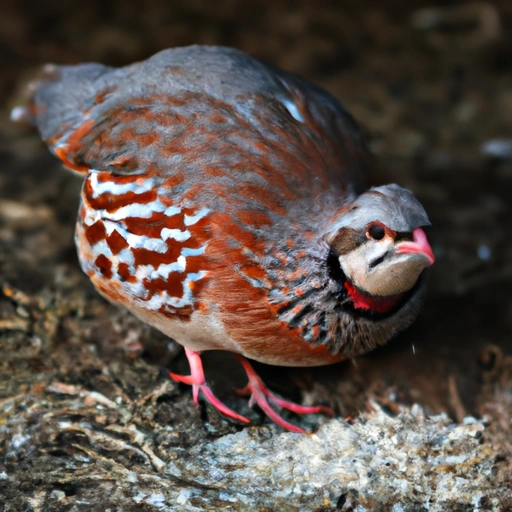Partridge
Description

Partridge is a small, plump game bird known for its tender meat and delicate flavor. It is a part of the pheasant family and is found in various parts of the world, including Europe, Asia, and North America. As a versatile ingredient in culinary practices, partridge can be prepared in numerous ways to suit a wide range of palates. It is often sought after by chefs and home cooks alike for its unique taste and texture, which can enhance a variety of dishes.
Common uses
Partridge meat is commonly used as a primary protein in gourmet dishes and traditional recipes. The bird is often prepared during the game season and served at festive occasions and special events. Its meat can be roasted, grilled, or braised, depending on the desired outcome and flavor profile. Partridge is also used in making rich broths and flavorful stocks that serve as the base for soups, sauces, and gravies.
Nutritional value
Calories
On average, a serving of partridge (100 grams or approximately 3.5 ounces) contains about 133 calories, making it a leaner option compared to other meats.
Protein
Partridge is an excellent source of high-quality protein, providing about 24 grams per serving, essential for muscle maintenance and growth.
Fat
With only 3 grams of fat per serving, partridge is considered a low-fat choice, ideal for those monitoring their fat intake.
Carbohydrates
Partridge contains negligible amounts of carbohydrates, making it suitable for low-carb diets.
Vitamins
It is also a good source of B-vitamins, particularly vitamin B3 (niacin), which is vital for energy metabolism and maintaining healthy skin.
Minerals
Partridge meat is rich in minerals like phosphorus and selenium, both important for bone health and immune function.
Health benefits
Regular consumption of partridge can contribute to a healthy diet, as its lean protein aids in muscle building and repair. The presence of B-vitamins supports metabolic processes, while the minerals found in partridge contribute to bone strength and immune system defense. Additionally, the low-fat content helps in maintaining a balanced diet and can be beneficial for cardiovascular health.
Potential risks
As with any game meat, there is a potential risk of exposure to lead from shot used in hunting, so it is important to source partridge from reputable suppliers. Furthermore, individuals with specific food allergies should exercise caution and consult with a medical professional before adding partridge to their diet.
Common recipes
Partridge is often featured in recipes such as roasted partridge with root vegetables, partridge pie, and partridge in a pear tree, a dish inspired by the famous Christmas carol. It can also be found in pâtés and terrines, offering a distinct gamey flavor.
Cooking methods
Popular cooking methods for partridge include roasting, grilling, sautéing, and slow-cooking. The bird can also be smoked or cured for a more intense flavor experience.
Pairing with other ingredients
Partridge meat pairs well with a variety of flavors, such as earthy mushrooms, sweet fruits like pears and apples, robust herbs like thyme and rosemary, and rich sauces made with wine or cream. It complements both red and white wines, depending on the preparation method and accompanying ingredients.
Summary
Partridge is a highly prized game bird with a rich historical background and versatile culinary applications. Its lean and nutritious meat offers health benefits while being adaptable to various cooking styles and recipes. Although there are potential risks associated with game meat, responsible sourcing and proper preparation can mitigate these concerns. Partridge serves as an excellent protein choice for those looking to explore the flavors of game birds in their cooking endeavors.